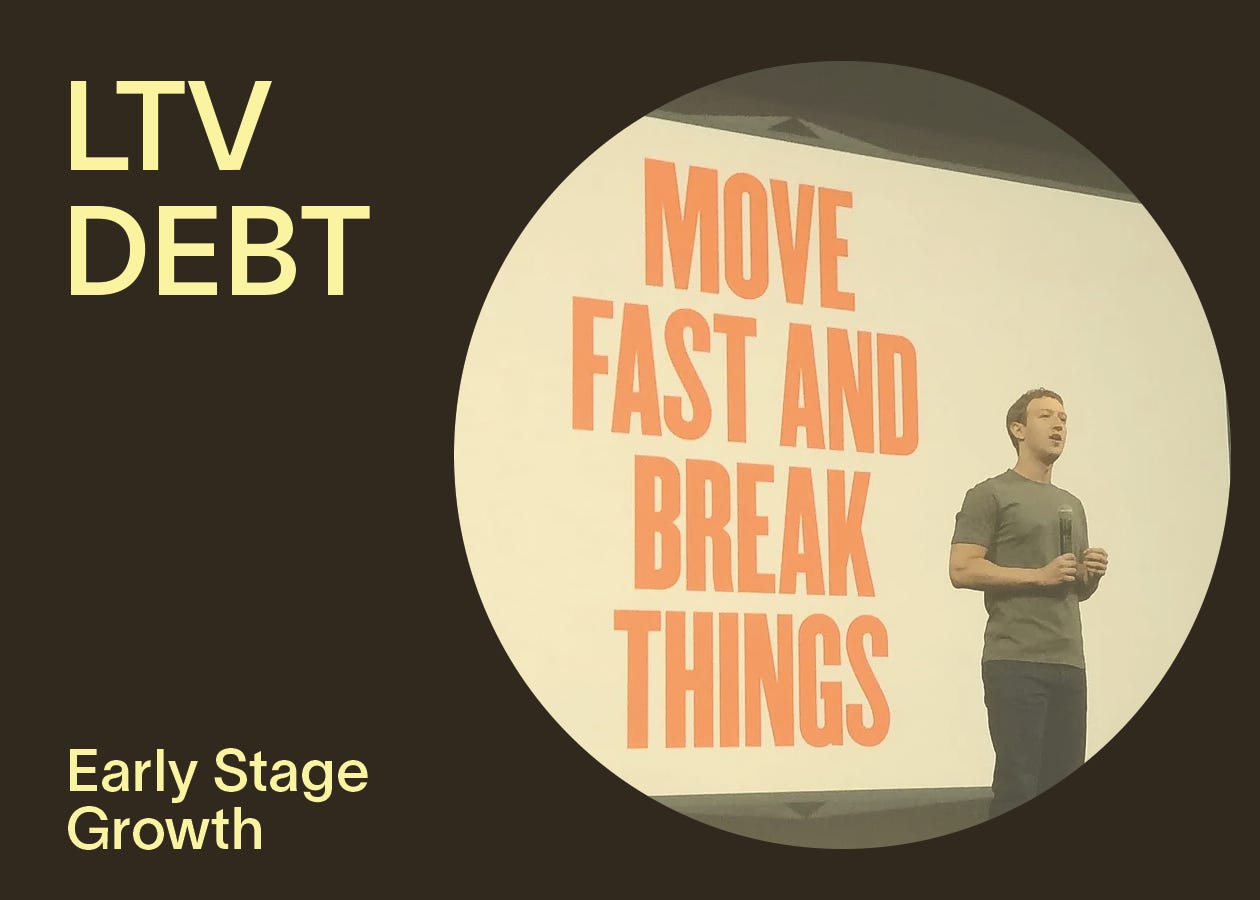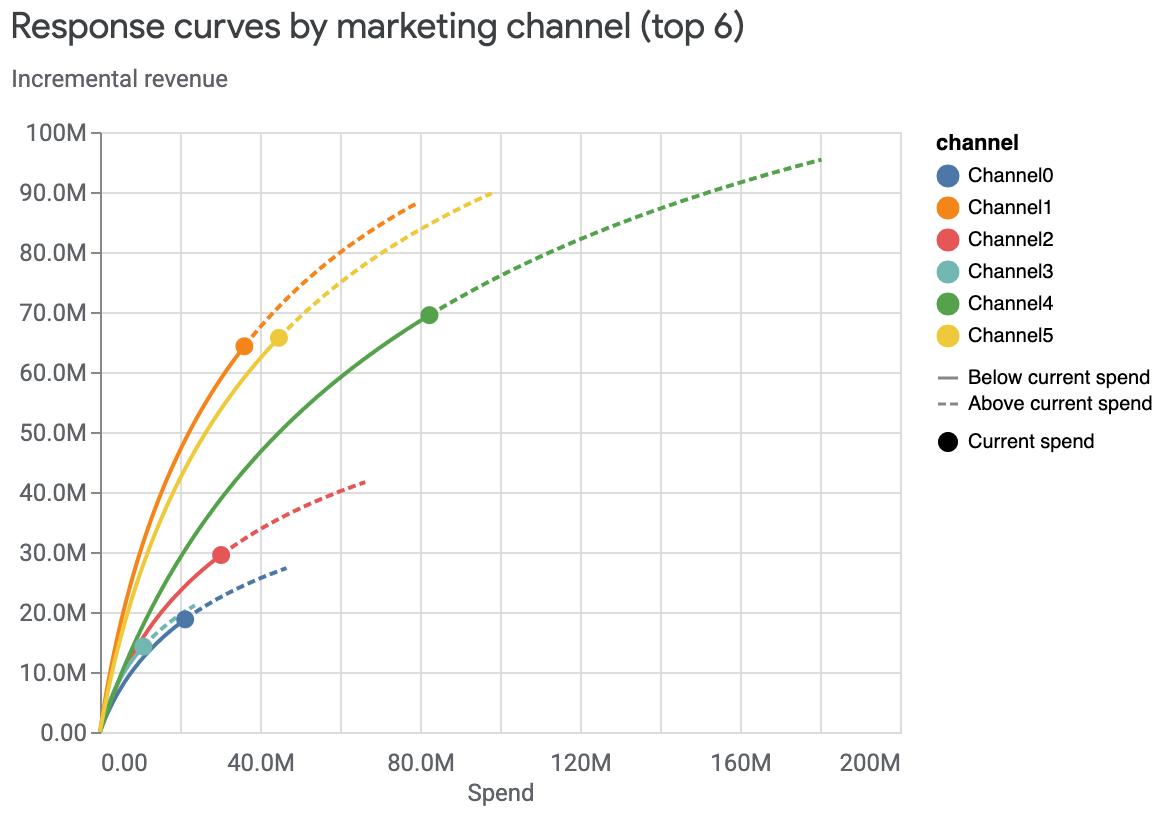LTV Debt: your growth killer
Why brands hit a wall at £10m ARR (and how the smart ones break through)
Lifetime value debt
I’d like to thank Beth Carter & Daniela Nardelli for help and feedback with these drafts.
I’ve been speaking to lots of CMOs and founders of brands doing £5-20m in revenue. They all describe variations of the same problem: acquisition costs that worked at £50k/month don’t work at £250k/month. Meta is more expensive. Conversion rates drop as they expand audiences. Retail velocity slows in new stores.
The issue they’re trying to solve a lifetime value problem with an acquisition solution.
The product investment gap
Most scaling brands invest millions in acquisition but treat lifetime value as an afterthought. Consider the typical £10m revenue brand:
£2.5m annual media spend
£250k+ in creative, team, and agency costs
Entire company aligned around CM3 or CPA targets
LTV strategy: “Klaviyo + subscription box”
This imbalance creates what I call “Lifetime Value Debt” — the compounding cost of underinvesting in product improvements while over-optimising on acquisition.
To get to £2.5m of annual media spend, you’ll have run thousands of creative tests. You might have invested tens of thousands testing new channels. You’ll probably have done the hugely human-centric time of launching influencer. Maybe you’ve started YouTube or podcast spend.
What if you took 10% of that media spend and invested it into product? What might happen?
Increase frequency from once weekly to three times weekly?
Ten percentage points of permanent margin improvement?
Zero returns through better quality control?
100% customer support satisfaction?
The returns compound. A 10% improvement in retention is worth more than a 10% reduction in CPA because it affects every cohort going forward. Yet we systematically underinvest in the former while obsessing over the latter.
Why this happens
The bias toward acquisition investment makes sense. Startups are designed to grow fast. As Paul Graham wrote, growth is the one essential thing that defines a startup. Without rapid growth, you can’t achieve the long term defensibility of scale or brand1.
The problem emerges when diminishing returns hit. There are two phases of growth:
Phase 1: Strong returns on acquisition spend
Each pound invested in marketing delivers predictable, positive returns. Your £50 CPA against £150 LTV works at £20k/month and £200k/month. In this phase, pouring fuel on the acquisition fire is correct.
Phase 2: Diminishing returns dominate
The same spend delivers progressively worse results. That £50 CPA grows to £70, then £90, while LTV stays flat or declines as customer quality deteriorates. You’re pushing against fundamental market limits.
The timing of when this happens is directly correlated to how much product market fit you have. I’ve seen brands in phase 1 spending over £2m per month on Meta, and I’ve seen brands in phase 2 at £30k per month.
But I see too many brands in phase 2, still operating thinking they’re in phase 1.
How technical debt became our model
The concept comes from engineering. Technical debt describes the long-term cost of shortcuts taken to ship quickly. You hard-code values instead of building proper systems. You skip documentation. You accumulate “todo” comments.
Facebook’s early motto was “move fast and break things.” The debt was intentional — growth mattered more than clean code. But in 2014, Zuckerberg updated it to “move fast with stable infrastructure.” They’d reached the point where debt payments exceeded growth benefits.
The same pattern plays out in consumer businesses, except the debt accumulates in product & operations rather than code quality.
Early on, growth at all costs makes sense. You need scale to matter. You need brand awareness to compete. You need the volume to negotiate better terms, build moats, and attract talent.
But unlike consumer tech companies with network effects (where scale inherently improves the product), most consumer brands don’t get exponentially more valuable to users as they grow. A can of Coke isn’t better because more people drink it.
As a result, this becomes a huge risk to consumer goods companies.
Breaking the cycle
The solution isn’t to abandon acquisition — it’s to rebalance investment. Here’s how the most successful brands approach this:
Audit your diminishing returns
You can do this via a marketing mix model (MMM), or in lighter weight ways, you can plot CPA and spend over time. If the curve is flattening or inverting, you’re in Phase 2. Marketing at this point can help improve but it can’t go 0 to 1.
Quantify the LTV opportunity
Map every customer touchpoint that could increase frequency, basket size, or retention. What would it take to move each metric by 30% or 50% or 100%? Price these improvements like you would a media campaign.
Create an investment portfolio
You should be used to the idea already that marketing is about bets. The way you scaled to £200k of media spend was through viewing Meta as a form of placing educated bets. Now view LTV as another one of those buckets. Continue to invest in acquisition, but increase incremental spend to bet on product & LTV.
Examples that compound:
Rapha Cycling Club: Members spend 4x more annually than non-members
Amazon Prime: Invested heavily in losing money on next-day shipping with hypothesis would radically increase LTV.
Peloton’s content: Daily workout programming drives 12-month retention from 70% to 92%
These aren’t marketing campaigns. They’re product investments that permanently improve unit economics.
The measurement challenge
LTV improvements take longer to measure than CPA changes. A creative test gives you signal in days. Retention improvements might take months to prove out. This delayed feedback is part of the reason why organisations systematically underinvest.
The solution is to measure leading indicators:
Product usage frequency (daily, weekly active users)
Customer satisfaction scores (NPS, support ratings)
Quality metrics (return rates, defect rates)
Engagement depth (features used, time in app)
These metrics predict LTV changes months before they show up in cohort analyses.
Product market fit is not an end state but a permanent discovery
When you’re in the true early days and trying to find product market fit, you’ll be thinking like this. How can I improve my product to get it good enough for people to use it and care?
By the time you get to £10m, you’ve often forgotten this mindset. Product market fit isn’t even a question.
But product market fit isn’t an end state, it’s a permanent discovery your startup is trying to make.
When to focus on LTV Debt
Like technical debt, LTV debt should be addressed strategically:
Too early (Phase 1): You sacrifice the growth needed to build scale advantages. Optimising retention for 100 customers won’t move the needle.
Too late (Phase 2): You’re already paying massive interest on the debt through inflated CPAs and declining contribution margins.
The inflection point usually comes between £5-10M revenue. You have enough customers to make retention improvements meaningful, but haven’t yet exhausted your acquisition channels.
The question isn’t whether you have LTV debt — every scaling brand does. The question is whether you’re still earning enough from growth to justify deferring payment, or whether it’s time to pay down the principal.
The Scale advantage that LTV buys you
Don’t beat yourself up for not focusing on this until now. The most important thing you can do early days is grow enough to become a formidable force. To do that, it requires substantial acquisition, serious revenue, proper scalable advertising, and a brand that’s starting to emerge.
But it does come with a cost. We accumulate LTV debt because acquisition growth is the priority.
Now the question is: are you still in the growth phase where acquisition investments dominate? Or have you reached the point where product investments would deliver better returns?
If you’re in Phase 2 but still focusing entirely on acquisition, then it’s worth the investment and shift to plan better.
If you can improve LTV by 25% or 50% or 100%, not only does it allow you to sustain more acquisition at your next level of diminishing returns – it also further builds your moat.
If you’re competing for eyeballs and can afford a £175 CPA, because you’ve invested half a million into LTV, and your upstart competitor can only support a £50 CPA, then you win in the auction almost all the time. And that feels like a pretty powerful form of defensibility.
Josh Lachkovic is the founder of Ballpoint, a performance marketing agency that helps brands scale from £1-10M ARR. Visit Ballpoint to learn more, or subscribe to Early Stage Growth for weekly insights on profitable scaling.
Note: Ballpoint works with brands looking to grow their spend from £30k per month to £300k per month. (We focus on this while you focus on that LTV debt ;)
Defensibility in startups can mean a variety of things. In the truest of tech businesses, it’s usually network effects. For most consumer companies, it’s usually brand or scale (both much weaker).



